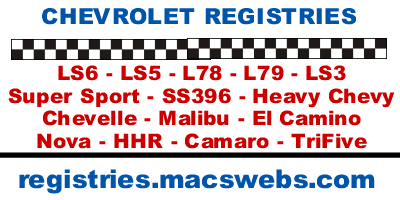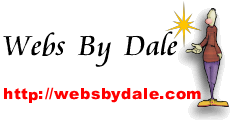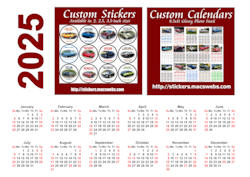
Body Section Links
BODY EMBLEMS
EMBLEM DRAWINGS AND PLACEMENT
Exterior Dimensions
Glass
Grille
Hood
MOLDINGS
PAINT COLORS
POTPOURRI
PRODUCTION CALENDAR
PRODUCTION NUMBERS
SERIES/MODEL
SS 396 Stripes
Sheet metal
Trunk/Cove
Trim - Chevelle 300
Trim - Chevelle 300 Deluxe
Trim - Malibu
Trim - SS 396
Trim - El Camino
Exterior Paint Colors
There were at least three OEM producers of paint for the 1967 Chevelle, DuPont Lucite, Rinshed-Mason, and Ditzler. Numbers shown for each paint supplier is the OEM paint number. These are part numbers for the original lacquer-based paint and may not be available today as lacquer has gone out of favor.
Be aware that the color representation here is approximation at best. Lighting can cause colors to appear darker or lighter than they actually are and colors should not be taken literally - except for black and white.
See Paint Process at the bottom of the page.
|
COLOR |
PAINT CODE / NAME |
LUCITE | RINSHED-MASON | DITZLER |
 |
A ~ Tuxedo Black ~ 6,823 Black |
88 | A-946 | 9300 |

|
C ~ Ermine
White ~ 46,571 White |
4024L | A-1199 | 8259 |
 |
D ~ Nantucket Blue ~ 36,289 Med. Blue |
4815L | A-1899 | 13349 |
 |
E ~ Deepwater
Blue ~ 10,953 Dk. Blue |
4817L | A-1900 | 13346 |
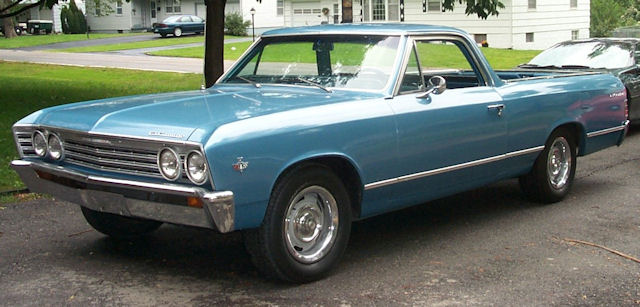 |
F ~ MARINA BLUE * ~ 53,669 Brt. Blue |
4850L | A-1920 | 13364 |
 |
G ~ Granada
Gold ~ 57,353 Gold |
4825L | A-1919 | 22818 |
 |
H ~ Mountain Green ~ 21,347 Med. Green |
4816L | A-1901 | 43651 |
 |
K ~ Emerald
Turquoise ~ 28,329 Med. Turquoise |
4818L | A-1903 | 43661 |
 |
L ~ Tahoe Turquoise ~ 14,625 Dk. Turquoise |
4824L | A-1904G | 43659 |
 |
M ~ Royal
Plum ~ 7,987 Plum |
4832L | A-1905 | 50717 |
 |
N ~ Madeira Maroon ~ 21,702 Maroon |
4624LH | A-1711M | 50700 |
 |
R ~ Bolero
Red ~ 27,532 Red |
4822LH | A-1907R | 71583 |
 |
S ~ Sierra Fawn ~ 14,454 Fawn |
4826L | A-1908 | 22813 |
 |
T ~ Capri
Cream ~ 20,034 Cream |
4819L | A-1909 | 81578 |
 |
Y ~ Butternut Yellow~ 30,206 Yellow |
4620L | A-1715 | 81500 |
|
* Marina Blue not available on the Concours station wagon |
||||
| Two-Tone - Not available on the Concours station wagon. |
||
|
CD ~ Ermine White / Nantucket Blue ~
1,401 White / Med. Blue |
||
|
|
||
|
DC ~ NANTUCKET BLUE / ERMINE WHITE ~ 4,049 Med. Blue / White |
||
 |
||
|
DE ~ Nantucket Blue / Deepwater
Blue ~ 537 Med. Blue / Dk. Blue |
||
 |
||
|
ED ~ DEEPWATER BLUE / NANTUCKET BLUE ~ 301 Dk. Blue / Med. Blue |
||
 |
||
|
GT ~ Granada Gold / Capri Cream~
4,137 Gold / Cream |
||
 |
||
|
LC ~ Tahoe Turquoise / Ermine White ~
1,758 Dk. Turquoise / White |
||
 |
||
|
ST ~ Sierra Fawn / Capri Cream ~
1,718 Fawn / Cream |
||
 |
||
GM literature states, "Convertible top: White (Regular Production), Black or Medium Blue (RPO C05) were available with any exterior color." The convertible top was available in both manual and power versions.
The numbers below appear on the Fisher Body Plate to identify color of convertible/vinyl top.
| COLOR | CONVERTIBLE TOP COLORS |
| 1 ~ White (Std C05AA) - 10 ~ Oshawa | |
| 2 ~ Black (RPO C05BB) - 02/2 ~ Oshawa | |
| 4 ~ Medium Blue* - 12 ~ Oshawa | |
Convertible Frame
The colors listed here are relatively generic and the actual paint color
numbers are not known. If anyone has more specific information on the
color(s) of the convertible frame, please email me with your information.
| Top Color | Interior Color - Frame Color |
| Black | Any - Black |
| White | Any - Black |
| Beige | Fawn/Tan - Fawn/Tan |
| Beige | Any other - Black |
| Blue | Blue - Blue |
| Blue | Any color besides blue - Black |
GM literature states, "Vinyl top option (RPO C08): Black or Lt. Fawn with any exterior color."
Note: Paint numbers for Lucite, Rinshed-Mason, and Ditzler are OEM numbers for lacquer paint.
Warning: Production numbers listed for paint colors (and
interior color/seat types) are presented with a caveat. As usual,
numbers from one GM source never seems to match up with another.
Single color paint total 387,874 units while two-tone paint accounts
for 13,901 units and special at 2,183 units. This results in a total
of 403,958 1967 Chevelles painted. Other GM reports indicate that
403,963 1967 Chevelles were produced. It would appear that the
remaining 5 1967 Chevelles produced were never painted - and that is
a bad assumption. Couple that with a total of 358,203 reported total
interior color/seats would mean 45,755 1967 Chevelles left factories
with no interior at all.
Paint color breakdown in matrix form.
* Correspondence with a fellow enthusiast in September of 2009 about
the Medium Blue convertible top has revealed this interesting tidbit
of information.
"I tracked down Kimmy at Eletrontop in New York, 800-221-4476. I sent
her the photos that you sent me and she immediately said without any
hesitation, “OH, that is GM medium blue.” She went on to say that this
was discontinued 10 years ago. She said that the original Haartz material
number was S71358ZDT. This number was replaced many
years ago by Haartz #2750045A (this number was discontinued
10 years ago). She was very knowledgeable and quick to be helpful."
| COLOR | VINYL TOP COLORS |
| 2 ~ Black (RPO C08BB) - 27 ~ Oshawa | |
| 6 ~ Light Fawn (RPO C08AB) - 29 ~ Oshawa |
U.S. Paint Code Chart
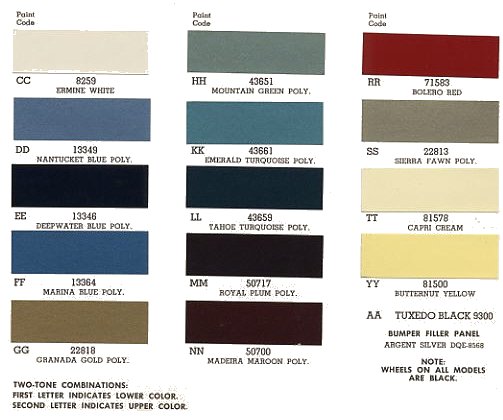

Paint chart from dealer showroom album
GM of Canada Paint Code Chart
General Motors of Canada LTD offered many of the same colors as their U.S. counterpart with three additional colors available (noted with asterisk), Verde Green Metallic, Silver Glaze Metallic, and Antique Pewter Metallic. Several other Canadian colors were identical to U.S. colors, only the names were a bit different.
| Color | Color Name | Paint Code | |
| Enamel | Lacquer | ||
| Tuxedo Black | A | 3A | |
| Provincial White | C | 3C | |
| Nantucket Blue Metallic | D | 3D | |
| Deepwater Blue Metallic | E | 3E | |
| Marina Blue Metallic | F | 3F | |
| Granada Gold Metallic | G | 3G | |
| Mountain Green Metallic | H | 3H | |
| Verde Green Metallic* | J | 3J | |
| Emerald Turquoise Metallic | K | 3K | |
| Tahoe Turquoise Metallic | L | 3L | |
| Plum Mist Metallic | M | 3M | |
| Madeira Maroon Metallic | N | 3N | |
| Silver Glaze Metallic* | P | 3P | |
| Bolero Red | R | 3R | |
| Sierra Fawn Metallic | S | 3S | |
| Capri Cream | T | 3T | |
| Antique Pewter Metallic* | V | 3V | |
| Butternut Yellow | Y | 3Y | |
-
RUSTPROOFING: Assembled car bodies are chemically sprayed to clean and etch the metal surfaces for corrosion resistance and paint adhesion. Unassembled sheet metal parts follow the same process.
-
BODY AND SHEET METAL PRIMERS: Four corrosion resistant primers, especially formulated, are hand sprayed on the body in areas where rust might develop. Lower areas considered especially vulnerable are coated with another rust inhibiting compound.
-
PRIMER COAT is applied to all outside and inside surfaces of front fenders and hoods. The parts are mechanically dipped or flow-coated to insure coating in all seams and secluded areas and baked at 390 degrees F. for 30 minutes. A coat of sealer is then applied by hand spray to all surfaces requiring another coat of lacquer.
-
FLASH PRIMER AND PRIMER-SURFACER COATS: An air-dry flash primer coat is hand sprayed on surfaces below the body belt line. Then a gray primer-surface coat is hand sprayed on all outside surfaces of the body and oven baked for 45 minutes at 285 degrees F.
-
INITIAL SANDING: Power wet sanding, followed by hand sanding, is done on all body surfaces requiring lacquering. This ensures a smooth surface for the lacquer finish. to remove the water, the body is wiped and run through an infra-red oven.
-
LACQUERING: Three coats of acrylic lacquer are spread on the exterior surfaces of the body and sheet metal parts to build up a finish of the required thickness for each color.
-
INITIAL BAKING: To harden the paint for final sanding, the body and sheet metal parts are baked for approximately 10 minutes at 200 degrees F.
-
FINAL SANDING: To remove body surface defects, power and hand sanding is done with fine grit sandpaper and mineral spirits as a wetting agent. Sanded areas are wiped to insure a clean surface before final baking.
-
FINAL BAKING: To assure a durable, hard, high luster finish the lacquer is baked for 30 minutes at 275 degrees F. Reheating the lacquer after final sanding permits paint film to soften, allowing surface blemishes and sanding scratches to disappear during the thermo-reflow process.
-
UNDERCOATING: To block out road noise, an asbestos fiber sound deadener with asphalt base is sprayed inside the wheel housings and on the bottom of the underbody at designated areas.
-
PAINT REPAIR AND PROTECTION: Mars, nicks, or scratches that occur during final assembly are corrected at the factory before shipment. When required, light "slush" polishing brings painted surfaces to a high luster finish. Wax is applied to all horizontal surfaces of each vehicle and polished out for protection during shipment. The wax contains no silicones, thus eliminating any paint contamination problem.
Interior Paint
The paint 'break' between exterior and interior color is the weather-strip on the doors. The top of the dash and windshield pillar should be "0" gloss paint. The top of the doors and quarter should be 60% gloss paint along with the rest of the interior.

